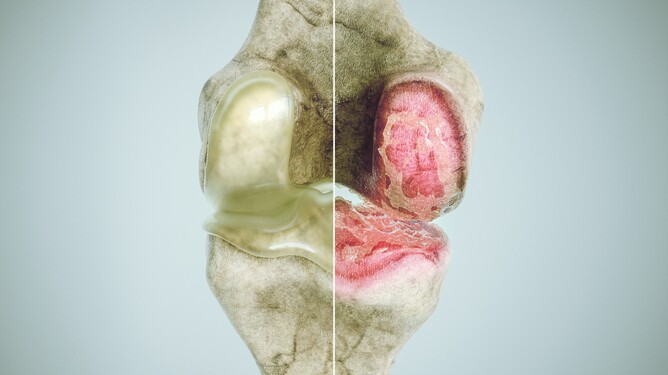Goats are infected as kids when they drink colostrum from an infected doe. Infection doesn’t occur before birth.
There are two main forms of the disease: nervous and arthritic.
Nervous:
Signs are first seen at 1-4 months old. The kids become increasingly weak in the back legs until they can’t walk (over days/weeks).
Initially the signs can look like a lameness.
The kid is usually bright and alert and keeps eating.
Older goats can sometimes get the nervous form too, it looks like listeria- circling, head tilt.
Arthritic:
Signs are seen between 1-2 years old. The severity of signs ranges from severe to very mild.
Typically people will notice the knees swelling up and the goat becoming lame. The joint pain and stiffness increases over time until the goat often starts walking around on its knees.
(There are other diseases that can cause swelling in goats knees).
Caprine Arthritis and Encephalitis (CAE) is a viral disease that mainly affects dairy goats. Infection with the CAE virus is lifelong. Only a few infected animals develop clinical disease, such as chronic arthritis, mastitis, pneumonia or brain disease, but even a goat without clinical signs has a reduced productivity.
The major way goats get infected is by drinking infected colostrum/milk. One infected doe milking into bulk milk can infect all the kids drinking it. CAE has also been found in semen, so it’s possible that a doe may get infected from an infected buck.
My doe tested negative last time but was positive this time, how does that happen?
There are three ways
* It’s unlikely, but possible that the doe has been infected since the last test.
* The doe might have been infected at the last test but she hadn’t made any antibodies yet (it can take up to 8 months to get antibodies).
* The most likely is that the doe has been infected with CAE the whole time, but her antibody levels are going up and down. Last time her antibodies were low, so she tested negative. This time they were high so she showed up positive. One negative test result doesn’t mean an animal is negative.
Controlling CAE:* If you have enough negative stock, start 2 herds- one negative and one positive herd. Be aware though, that not all negative animals will be true negatives. For this reason keep retesting.
* Test all replacements- whether brought-in, or home raised.
* If you want to keep kids from positive does, take them off the doe straight after birth- don’t allow any licking or drinking.
* Milk the negative herd first and do a good disinfection of the cups etc before they are milked again.
* Have separate vaccination, tattooing, hoof trimming and drench equipment for each herd.
* Use negative bucks over negative does. If a negative buck is used over a positive doe, consider him to be infected.

